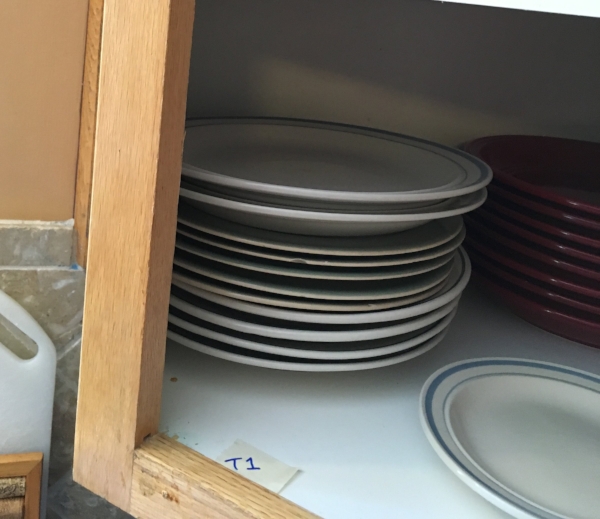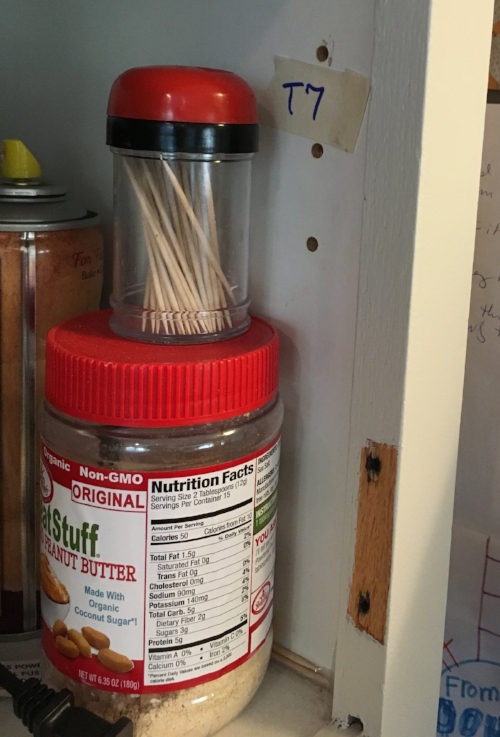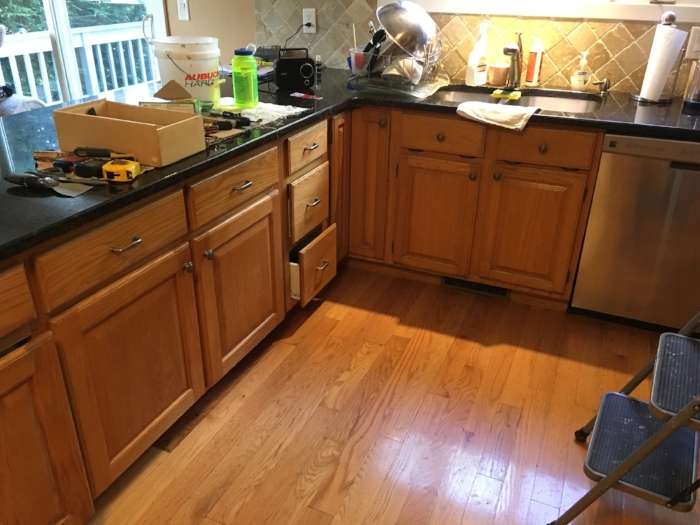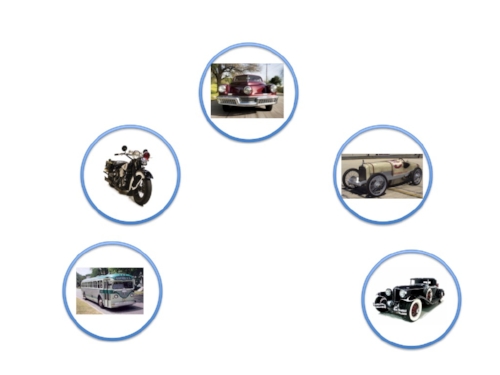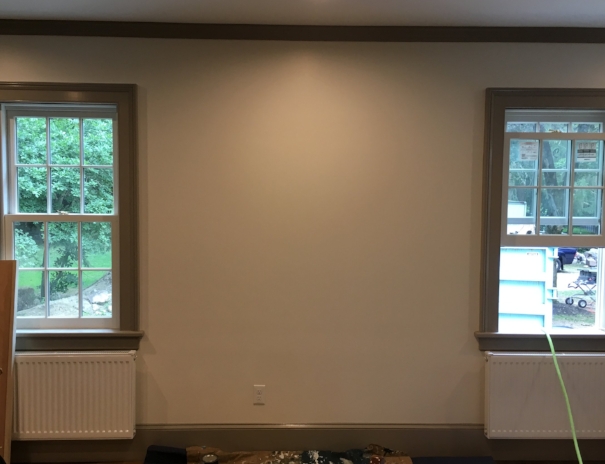As a decorative painter, I am aware of the perception that faux finishes on walls are old-fashioned and out of date --- and looking at some of the sponge-painted finishes that were big DIY projects back in the 80’s and 90’s, I can understand why!
However, the right finish in the right space can be bold, fresh and downright opulent. Of course, a good interior designer can make all the difference in making these decisions – which was the case with my most recent faux finish project in Newton.
Interior designer Jessica Seth of Jackson Seth Designs was working on a re-model project and called me in to help make the dining room a centerpiece of the home. Jessica had already chosen a patterned grass paper for the ceiling and had the trim and walls painted a base color to work with the tones in the paper. To take the whole look to another level, Jessica asked me to come up with a faux finish that would tie in to the darker tones in the wallpaper and have a mottled look – similar to venetian plaster but more subtle. To pack some extra visual punch, she also wanted the walls to have a high-gloss finish!
As usual, my process started with creating a board to show Jessica my interpretation of what this could look like. We reviewed my board and decided to look at another design option (more subtle in the patterning) and different gloss options for the homeowner to choose from. Jessica and I were both happy to find that the client liked all the options – but after some fun collaboration, they settled on the more subtle pattern with the highest gloss as the final option. To accomplish this finish, I first did a 2-step glaze technique to produce the pattern that would not be too busy, but would still have nice depth and interest. Once this was done, I was on to the high-gloss challenge!
Oil-based options offer a nice gloss with a smooth finish, but some are not well-suited for walls – and any of them would quickly yellow and throw off the color scheme! Instead I used a water-based polyurethane, which can be challenging to get a smooth application. To address this, I used a very low-nap mohair roller and applied 4 light coats – which achieved a smooth, even finish with a nice deep gloss!
Following are some pictures of the final result. The wallpaper is not yet installed, but you can easily see how this finish is a great way to make a stylish statement!
Enjoy!
Jason













